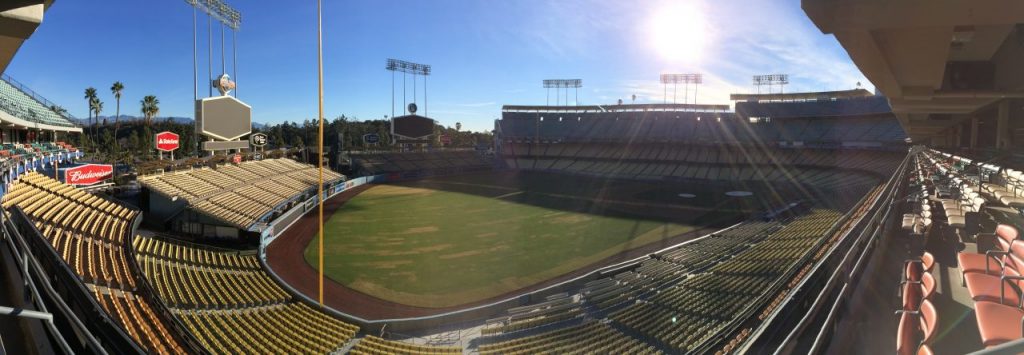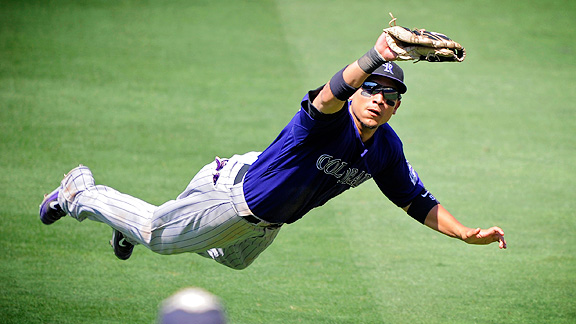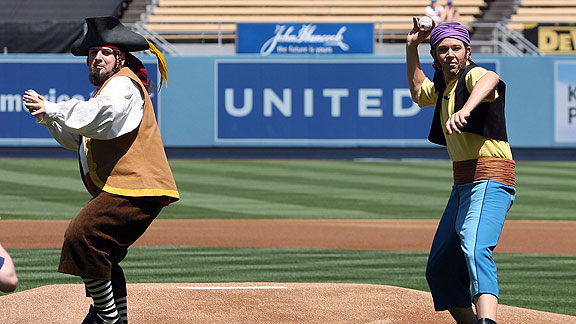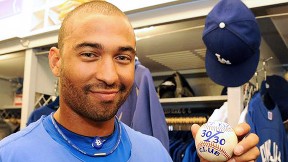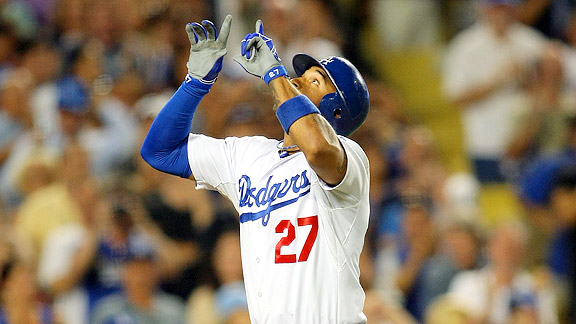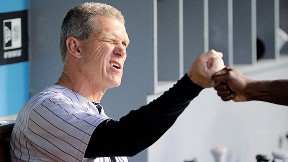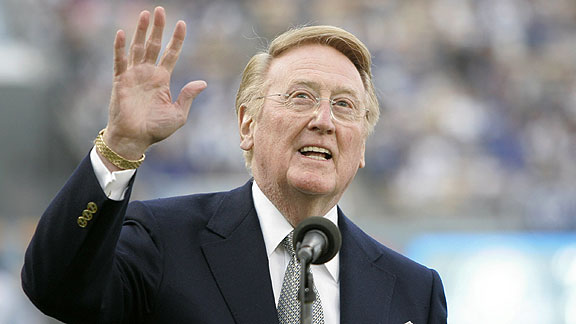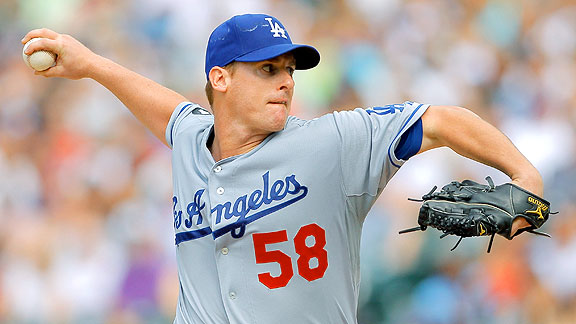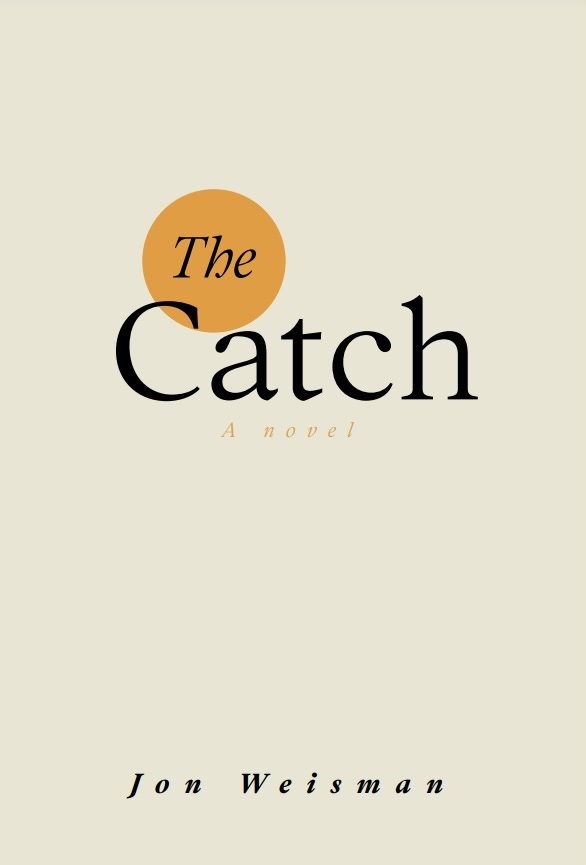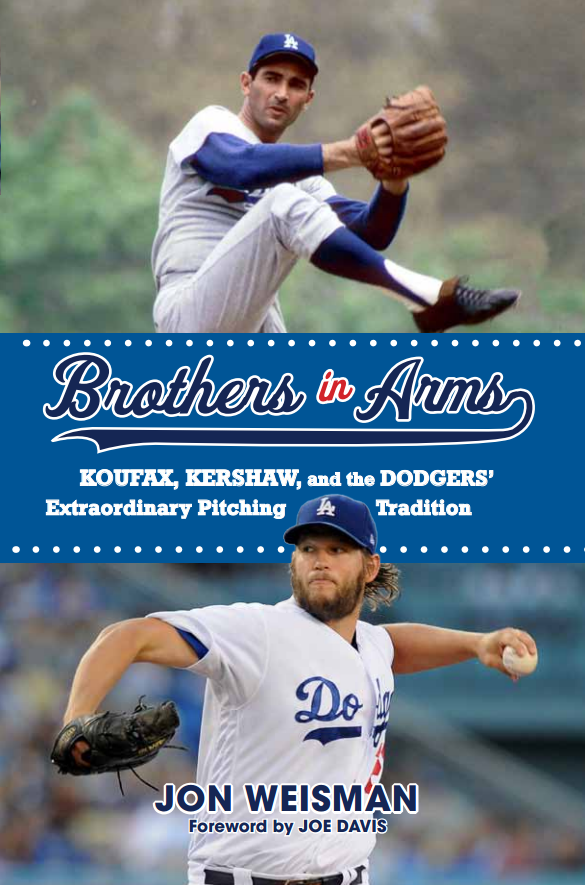Jaime Jarrin joined Vin Scully in signing up for 2012 today:
… “It was very kind of them to ask me to return,” Jarrin said. “My desire was to stay with the team and do what I love to do and be around you guys (the media). I am especially grateful to have the chance to be the link between the Dodgers and the Hispanic community. It is great to have the chance to do something I love and to do it with the community in mind.” …
… For now, though, Jarrin said he wants to continue to call every game, although he did take an in-season vacation for the first time this year and said he likely will do so again next year.
Jarrin said that after more than a half-century of calling Dodgers games on Spanish-language radio, he still has a passion for the job.
“I love it,” he said. “Even if the team isn’t doing well, I try to see things that compensate (for that). In baseball, everything is so different from one game to the next. Really, it is fun to do it. I still love it. Otherwise, I would quit right now, because financially, I am well set.” …
* * *
This time last year, John Lindsey was the Dodgers’ feel-good story. Christopher Jackson of Albuquerque Baseball Examiner catches up with him.
* * *
Tony Jackson’s latest view of the Andre Ethier situation is up at ESPNLosAngeles.com:
… As it stands, Ethier won’t be eligible for free agency until after 2012. But is he trying to force his way out of town a year early? That’s my theory. I don’t have enough insight to know for a fact that it’s true, or that it isn’t. That’s why they call it a theory. But I have to say, when you take the statements Ethier made in March, and to Simers this weekend, and put them together, it sure smells that way.
Could it be that Ethier is trying to become such a distraction that the Dodgers, rather than going through the expensive process of arbitration this winter — he already is making $9.25 million this season and would get a significant raise — will simply non-tender him, making him a free agent a year early?
One thing is clear: if it’s a distraction Ethier is trying to become, he is at least succeeding there. Mattingly made that fairly obvious before Sunday’s game, when he said he was “blindsided” by Ethier’s remarks. He made it clear again during the game when, with the bases loaded, nobody out, the pitcher’s spot due up and the Dodgers trailing 7-2 in the bottom of the seventh inning, he sent Eugenio Velez — that would be the 0-for-28 Eugenio Velez — to pinch hit and kept Ethier on the bench.
Although Ethier was on deck to hit for Rod Barajas when the game ended, Mattingly made it clear again immediately after the game, when asked by a reporter whether Ethier will be back in the lineup Monday night against the San Diego Padres.
“We’re kind of in a little bit of a box, really,” Mattingly said. “If he says his knee hurts and we put him out there and he blows a hammy or hurts something else, now we’re kind of in a box as far as having trouble using him. So we’re going to talk and go from there.”
It was a cryptic comment from an exasperated manager, but it hinted that Ethier’s playing time could be sporadic the rest of the way, especially with the Dodgers (62-70), who are in fourth place in the National League West and 12 games behind the division-leading Arizona Diamondbacks, far out of contention.
If Ethier is trying to outsmart the system, well, the one he is outsmarting might be himself. Let’s say he does force the Dodgers’ hand, and they do cut him loose, and he does become a free agent. In that case, how much of a market will there be for a guy who is coming off a down year? A guy who probably is going to be coming off arthroscopic knee surgery? A guy who so often lets his emotions get the better of his game? A guy who certainly isn’t helping his reputation with all these public outbursts, especially at a time when, according to various sources, scouts from other teams are starting to pick up on his moodiness and the fact he can be high maintenance?
Better yet, what if the Dodgers simply trade him? In that case, there is just as much chance he ends up in Kansas City or Pittsburgh as the promised land of New York or Boston, which his close friend and former Arizona State University teammate Dustin Pedroia reportedly has told him is a great place to play big league baseball. …
